Discoveries
-
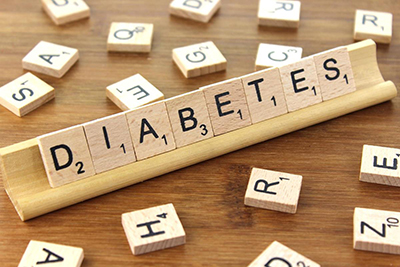
Study points to importance of chromatin remodeling complex for β cell function
By Lorena Infante Lara Research from the labs of Roland Stein (Molecular Physiology & Biophysics) and Chris Wright (Cell & Developmental Biology) suggests that the chromatin remodeling complex Swi/Snf, when bound to transcription factor Pdx1, is required for controlling the growth rate of the embryonic pancreas and for maintaining β cell identity… Read MoreJun. 28, 2019
-
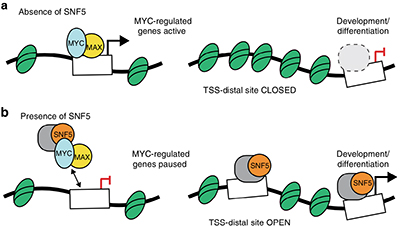
A New Target for a Deadly Childhood Cancer
Figure reproduced under the Creative Commons Attribution 4.0 International License 4.0 from A. M. Weissmiller, et al. Nat. Comm., (2019) 10, 2014. SWI/SNF is a multicomponent protein complex that plays an important role in chromatin remodeling. It is also likely an important tumor suppressor, as indicated by the fact that… Read MoreJun. 12, 2019
-
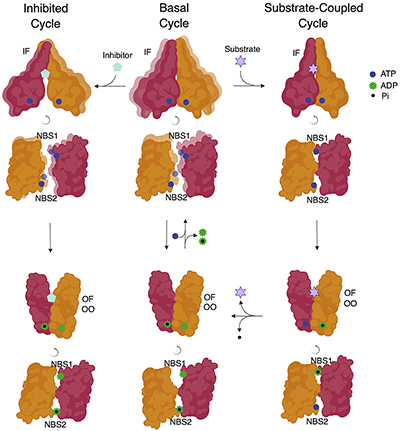
Functional Insights Into a Major Drug-Resistance Transporter
As a member of the class of ABC (ATP-binding cassette) transporters, the P-glycoprotein (P-gp) harnesses energy from ATP hydrolysis to power conformational changes that transfer substrates across the cell membrane against a concentration gradient. P-gp transports more than 200 structurally diverse substrates, thereby playing a role in the pharmacokinetics of… Read MoreMay. 30, 2019
-

Taming the Fear Response
The Scream, Edvard Munch, PD-US-expired. Disorders arising from trauma and stress, such as post-traumatic stress disorder (PTSD), are a major cause of morbidity and mortality, and they exact a huge economic toll on our society. Hence, a major effort is underway to find new treatments for these diseases. A clue… Read MoreApr. 30, 2019
-
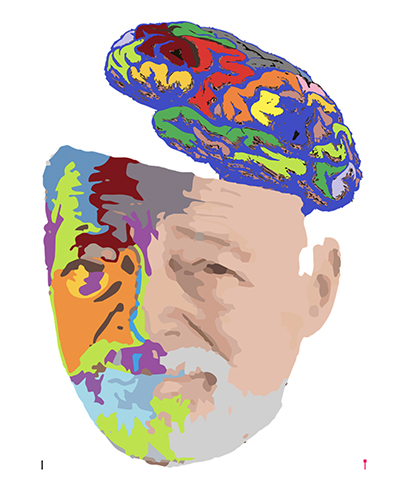
A new framework for genome-wide association studies
A multi-institutional team of researchers, led by Basic Sciences faculty member Bingshan Li (Molecular Physiology & Biophysics), has developed a new framework that can help researchers learn more from genome-wide association studies (GWAS) than previously was possible. Their work was published in Nature Neuroscience. Read MoreApr. 25, 2019
-

Controling RNA Polymerase Dynamics
Reproduced from Wikimedia Commons through the Creative Commons CC BY-SA 3.0. The process of transcription is extremely complex, requiring the well-coordinated interactions of numerous modulatory proteins and protein complexes. Two key players in this process are cyclin-dependent kinase (CDK)7 and CDK9, both of which phosphorylate multiple sites on RNA polymerase… Read MoreMar. 22, 2019
-

Targeting the WIN Site of WDR5
Proposed mechanism of WIN site inhibition. The inhibitor (i) binds to the WIN site of WDR5, displacing it from its binding site on chromatin. A major result is a decrease in transcription of genes encoding ribosomal proteins (RPGs), leading to a disruption of protein synthesis, the nucleosomal stress response, and… Read MoreMar. 21, 2019
-
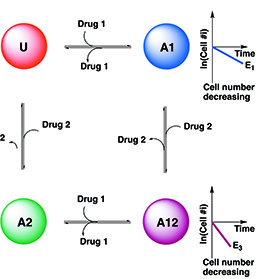
In Search of Synergy
In recent years, the number of complex diseases such as cancer and drug resistant infections that are treated with multiple drugs has rapidly increased. Through combining drugs, one hopes to obtain synergy either by increasing potency (so the desired effect can be achieved with lower drug doses) or increasing efficacy… Read MoreMar. 15, 2019
-

Activation of ATR for Distinct Signaling Functions
Reproduced under the Creative Commons Attribution Noncommercial Share Alike 4.0 International License from T. E. Bass and D. Cortez, (2019) J. Cell Biol., published February 12, DOI: 10.1083/jcb.201810058. Copyright 2019, Bass & Cortez. ATR (ataxia telangiectasia-mutated and Rad3-related) is a kinase well known for its role in the DNA damage… Read MoreFeb. 20, 2019
-
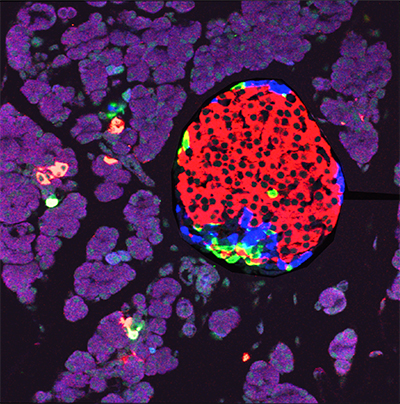
Key to Islet Cell Differentiation
Micrograph of an adult mouse pancreatic islet with immunofluorescence staining for (A) glucagon (α cells, blue), insulin (β cells, red), and somatostatin (δ cells, green). The high pinkish background tissues are mostly acinar and duct cells. Image kindly provided by Guoquiang Gu. Copyright 2019. The pancreatic islets of Langerhans are… Read MoreJan. 31, 2019